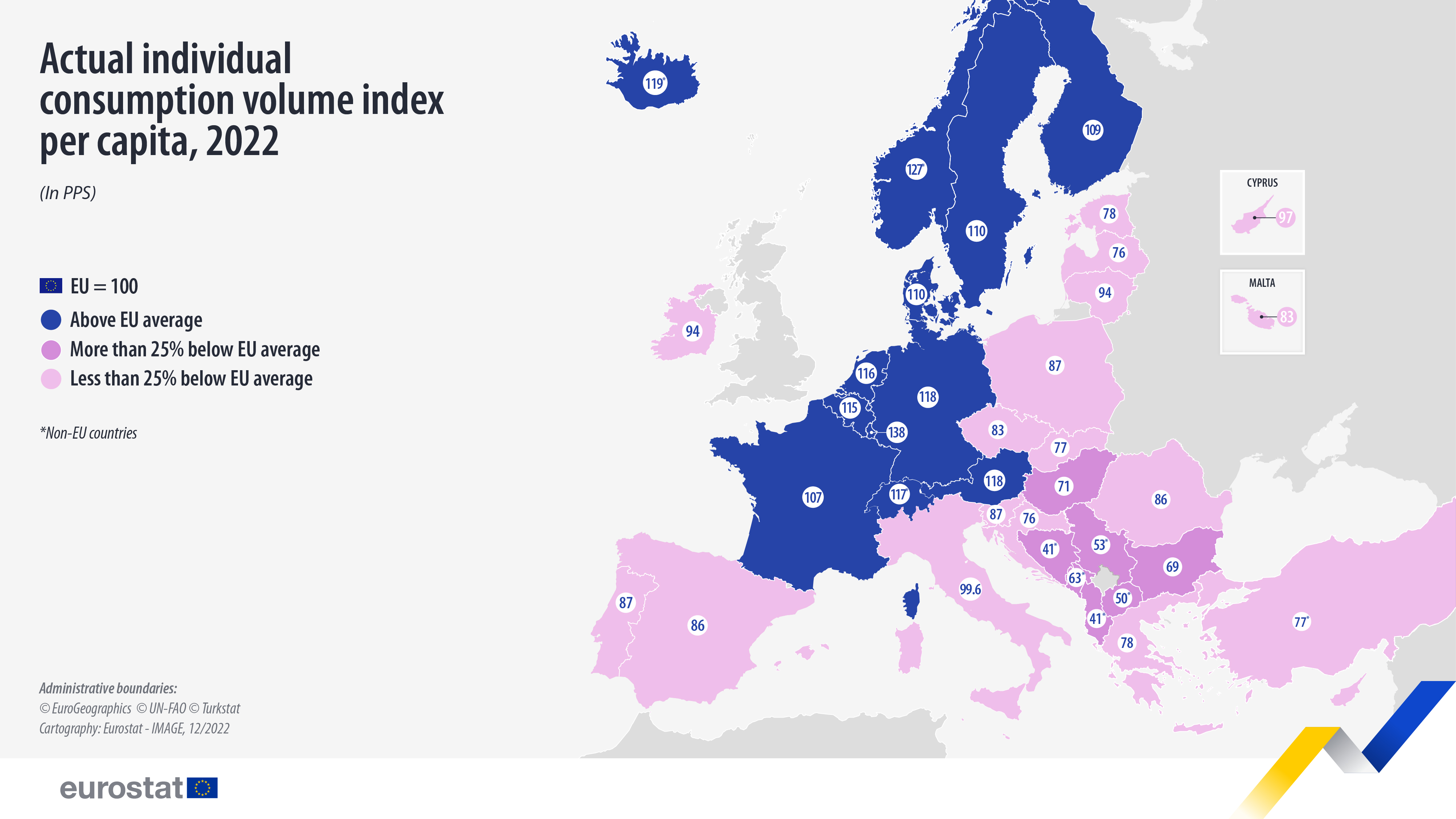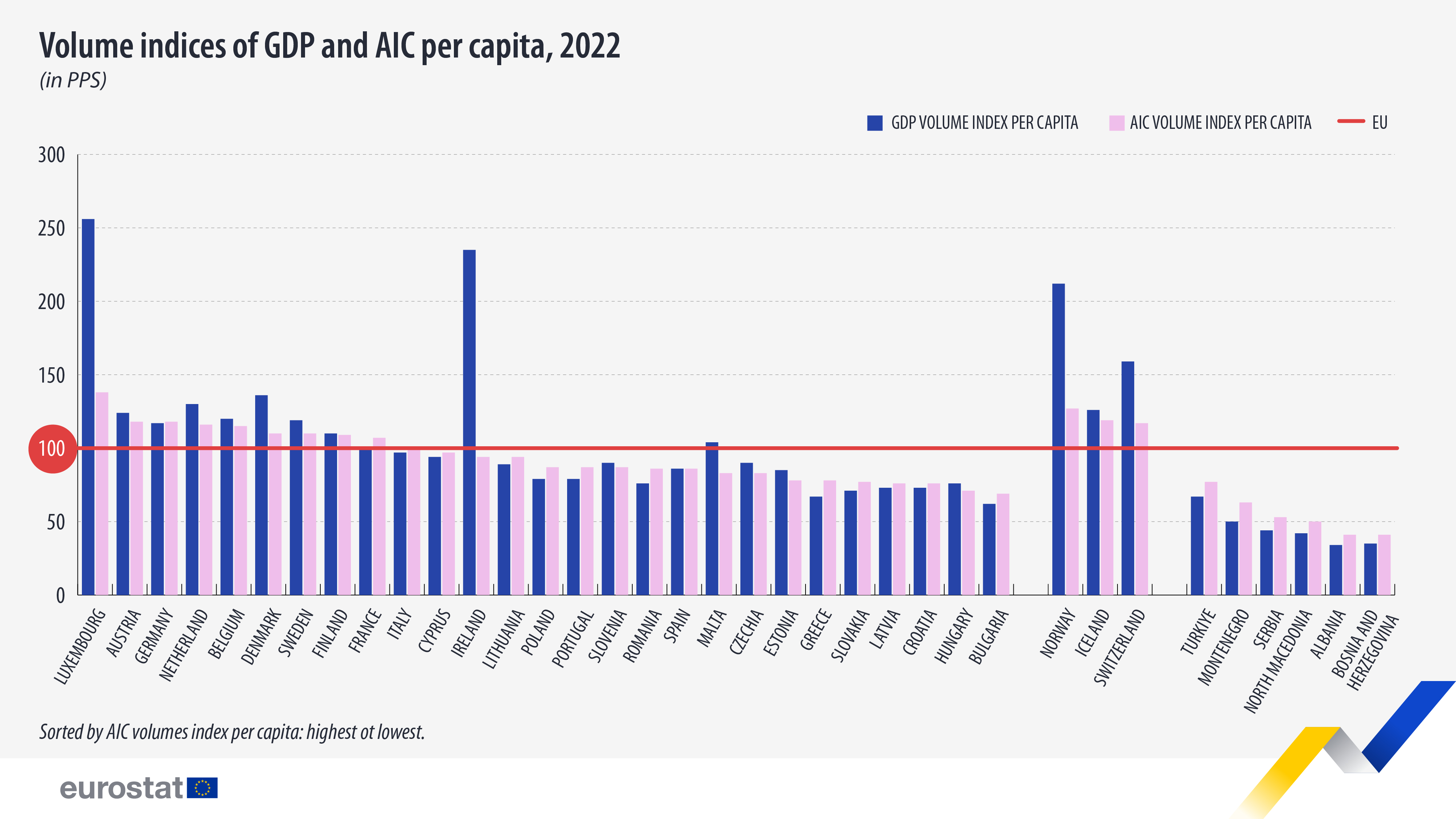Highest AIC levels in Luxembourg, Austria and Germany

In 2022, the levels of actual individual consumption (AIC) in the EU showed significant differences. Used as a measure of the material welfare of households, AIC per capita expressed in purchasing power standards (PPS) varied from 69% to 138% of the EU average across EU countries.
This information on GDP and consumption per capita is based on revised purchasing power parities published by Eurostat today. The article presents some of the findings from the more detailed Statistics Explained article.
As in previous years, Luxembourg recorded the highest level of AIC per capita in the EU at 38% above the EU average, followed by Austria and Germany (both 18% above), the Netherlands (16% above) and Belgium (15% above). In 2022, nine EU countries recorded an AIC per capita above the EU average.
The lowest levels of AIC per capita were registered in Bulgaria (31% below the EU average), Hungary (29% below), Croatia and Latvia (both 24% below) and Slovakia (23% below).
Over the last three years, AIC per capita relative to the EU average has changed in the majority of EU countries. Between 2020 and 2022, AIC levels increased in 18 EU countries, most notably in Bulgaria (69% of the EU average in 2022 compared with 60% in 2020), Croatia (76% vs 69%), Romania (86% vs 81%), and Ireland (94% vs 89%).
Conversely, AIC levels decreased in 7 EU countries. The biggest decreases were recorded in Denmark (110% in 2022 vs 121% in 2020), Germany (118% vs 124%) and Finland (109% vs 114%).
Source dataset: prc_ppp_ind
Luxembourg and Ireland still score highest GDP per capita in 2022
In 2022, like in 2020 and 2021, Luxembourg and Ireland recorded the highest level of GDP per capita expressed in PPS in the EU, at 156% and 135% above the EU average.
Data show substantial differences between EU countries in terms of GDP per capita, used to measure economic activity. After Luxembourg and Ireland, Denmark (36% above the EU average), the Netherlands (30% above), Austria (24% above) and Belgium (20% above) come on the top of the list with a GDP per capita more than 20% above the average.
In contrast, Bulgaria (38% below the EU average), Greece (33% below) and Slovakia (29% below) registered the lowest GDP per capita.
Source dataset: prc_ppp_ind
For more information
- Statistics Explained article on consumption and GDP per capita
- Thematic section on purchasing power parities
- Database on purchasing power parities
- Metadata on purchasing power parities
Methodological notes
- Luxembourg: the high GDP per capita in Luxembourg is partly due to the country's large share of cross-border workers in total employment. While contributing to GDP, these workers are not taken into consideration as part of the resident population which is used to calculate GDP per capita.
- Ireland: the high level of GDP per capita in Ireland can be partly explained by the presence of large multinational companies holding intellectual property. The associated contract manufacturing with these assets contributes to GDP, while a large part of the income earned from this production is returned to the companies’ ultimate owners abroad.
If you have any queries, please visit our contact us page.


